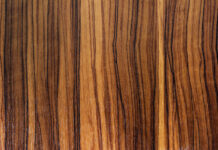Do you like to switch from a green lawn to one with creeping thyme? This is the quickest and most straightforward guide to creeping thyme. A green lawn is less desirable in 2025 since it needs more upkeep and the grass goes brown.
Inherently, creeping thyme is more visually appealing than green lawn and requires less upkeep. It enhances the garden’s beauty and is inherently friendly. For green lawns in the UK, creeping thyme works well when paired with postratre ground cover plants.
Benefits of Thyme Lawn Creeping
Evergreen perennial creeping thyme grows slowly, needs little care, and looks good all year long. With minimal maintenance, it doesn’t turn brown, making it superior to green lawn.
- It is not necessary to mow or water creeping thyme in order for it to grow.
- It will stay evergreen and grow into thick mats that can withstand foot tread in mild winters.
- During the summer, creeping thyme flowers in a wide variety of colours that are ideal for pollinators.
- It is also resistant to illnesses that frequently damage other plants and pets like dogs and cats.
Negative aspects of creeping thyme
Some drawbacks of creeping thyme are as follows:
It takes time for creeping thyme to develop and spread, particularly during the first year.
Because it doesn’t do well in shaded spots, its planting options are limited.
It’s not appropriate for damp locations since poor drainage might cause root rot.
Comparing creeping thyme seeds or seedlings to conventional grass, the former can be more costly.
How can You start a lawn using creeping thyme?
It is considerably simpler to plant a Creeping Thyme (Thymus serpyllum) lawn at your home. Spring to summer is the ideal time of year to plant creeping thyme since it allows the plants to establish roots. For creeping thyme to thrive, the soil must drain properly and receive full sunlight. Plant them six to twelve inches apart. As creeping thyme establishes itself, it grows slowly for the first year. In about three years, however, it reaches 6 to 18 inches.
Loosen the dirt after removing any vegetation and rocks from the area.
- Line the ground with creeping thyme seeds, or space thyme seedlings 8–12 inches apart.
- Press gently to keep the soil and water moist.
- Get at least six hours of sunshine each day to support growth.
- Once planted, thyme is drought-tolerant, so water it sparingly.
A Creeping Thyme: How to Take Care of It?
Creeping thyme requires less care to develop, as I have already said. You should keep a few things in mind when maintaining your creeping thyme grass.
- Every day, Encure Creeping Thyme needs at least six hours of sunlight to develop.
- The ideal soil for creeping thyme is well-drained. Check the pH level of your soil to see whether it is between 6.0 and 8.0. It prefers soil that is slightly alkaline.
- Keep the soil wet while it is first growing until it becomes established. Too much water can damage the root.
- You don’t need to fertilise creeping thyme heavily. In the early spring, a balanced fertiliser will suffice to maintain its health.
- The ideal temperature range for creeping thyme is 65°F to 85°F, yet with the right care, it can withstand temperatures as low as 0°F.
Common Problems
Pets don’t cause much of an issue with creeping thyme. Nevertheless, tiny insects such as aphids, whiteflies, spiders, and gnats can damage it by wilting and sucking sap; they can also draw mold, which can weaken the plant as a whole.
While creeping thyme is resistant to disease, excessive watering can damage the roots, which may impact the plant’s ability to develop.
Foot traffic crushes the roots of creeping thyme, generating uneven patches and diminishing development. Compacted soil also restricts drainage and raises the risk of illness.
Final Thoughts
The ease of maintenance, durability, and aesthetic appeal of a creeping thyme lawn make it far superior than a typical grass lawn. Particularly well-suited for gardens in the United Kingdom, creeping thyme grows well in well-drained, sunny areas and is highly resistant to pests, diseases, and light foot activity. Because of its resilience and inherent beauty, it’s a great option for anyone looking for a colourful, sustainable ground cover that can tolerate a range of environmental factors and encourage pollinators.
FAQs
Is it okay to give dogs creeping thyme?
Creeping thyme is completely safe for dogs. If you have animal pals, you may relax knowing that this is a safe option for a pet-friendly landscape.
Are grasses replaced by creeping thyme plants?
Indeed, over time, grass can be supplanted by creeping thyme, which grows into a dense, low-growing mat.
Could I merely distribute the seeds of creeping thyme?
Indeed, you can distribute creeping thyme seeds directly on the ground; however, for optimal germination, gently press the seeds in and keep the soil moist.
In what ways can creeping thyme have drawbacks?
Because it grows slowly, requires soil that drains well, and can’t withstand much shade, creeping thyme isn’t the best choice for every landscape.
Can you plant creeping thyme without having to dig up your lawn?
To ensure that creeping thyme has a clean space to grow and spread, it is best to remove any existing grass and weeds.
























